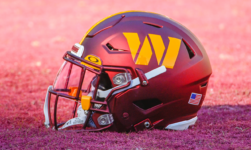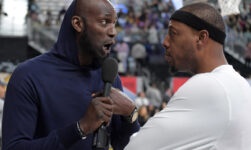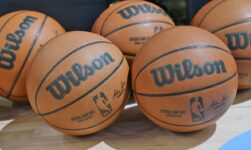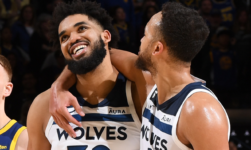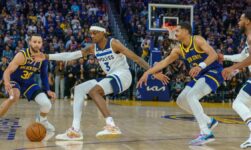The good news: We’ve got another NBA season — one loaded with absurd talent, fascinating storylines, rising stars and up-and-coming teams — bearing down on us.
The bad news: It’s going to be a rough and rocky road, one full of positive COVID-19 tests, injuries, unpredictable outcomes and enough uncertainty to make 2020’s sports calendar look, by comparison, tame and reliable.
That’s the takeaway from numerous conversations CBS Sports has had with NBA league sources — executives, scouts, former players and more — since the league this week released a 134-page guide to navigating a pandemic that postponed last season, has altered every facet of American life and continues to rage.
The NBA itself, in fact, has been clear about how unlikely it is that its successful bubble in Orlando will even remotely approximate a regular season outside of it. We heard it in the news that 48 of 546 players tested positive, an ominous sign.
We also heard it in the memorandum itself: “It is likely that some staff, players, and other participants in the 2020-21 season nonetheless will test positive or contract COVID-19, particularly as the virus remains prevalent in particular team markets and surrounding communities. The occurrence of independent cases (i.e., cases not spread among players or team staff) or a small or otherwise expected number of COVID-19 cases will not require a decision to suspend or cancel the 2020-21 season.”
Translation: It’s going to get ugly. And we’re going to push through this season anyway.
Here are some key takeaways, thoughts and concerns based on CBS Sports’ conversations with those across the NBA as the league prepares for another once-in-a-lifetime basketball challenge.
It’s going to be bad
That’s the universally agreed upon point: If you think the NFL’s ups and downs have been disruptive, you haven’t seen anything yet. Though the league has prohibited team employees from discussing the reality, in private conversations there is a shared certainty that there will be many, many problems this upcoming season as players and team employees test positive and potentially whole teams are rendered unavailable for long stretches.
The solution? Deal with it.
Play subs. Use the expanded rosters. Look to your G league squad. Lean on your veterans and stars to try their best to convince guys in the locker room to act properly outside of it. But the show will go on, even as everyone from the commissioner’s office to individual markets understand that an out-of-control pandemic, in a world where many don’t take it seriously — the reality of America right now — will also be the reality of the NBA.
And the show will go on
Most believe commissioner Adam Silver and the league will do everything in their power to finish all, or most, of the season. This, too, reflects reality beyond the league: Commerce is doing all it can to continue even as COVID-19 pushes back.
We want to be healthy. We want jobs. And the goal is to try and achieve both of these in tandem.
There’s also a sense that the rush to return so quickly after October’s Finals strategically bakes in some early games if the NBA is forced to cut its 72-game season to, say, 65 or 60 or fewer.
Yes, the goal and expectation, because of television contracts and the financial realities of playing even fewer games, is to play all 72. But the quick turnaround does create some flexibility if things get really bad.
Injuries this season are just as scary a specter for a team’s chances as COVID-19
One interesting feeling in the league is that injuries to players weigh just as heavily on organizations, or even more so, than the fear of a rash of positive COVID-19 tests.
There’s a fatalistic resignation that coaches, executives and players simply can’t control the spread of an invisible virus and the private-if-selfish actions of some of those team employees and players. That feels inevitable, the thinking goes, just as it has been across the country.
Person after person said some version of: “People are going to get it, it could be bad, just hope for the best and get through it.”
But injuries are another matter — one, in theory, you can have more control over — and several sources pointed to international soccer as an example of what happens when a condensed schedule follows a woefully short offseason.
And that’s a rash of injuries.
The NBA is not the NFL. Outside of what happened to the Broncos’ entire stable of quarterbacks (and in some cases, a particular starting QB) an NFL team can win games even if one of its best players goes down to COVID-19 or injury. But take the best player off almost any team in the NBA, particularly for a long stretch, and that team is likely in deep trouble.
That fact will be compounded by a Western Conference that, at least right now, does not have a single team that isn’t eyeing itself as a potential playoff team.
All of big-time sports are a war of attrition, with champions almost always requiring the good luck of avoiding serious injuries to win it all. This year will be, sources stressed over and over, a year of utter unpredictability as much due to a possible crop of injuries as to COVID-19 issues.
Load management
It’s worth keeping an eye on whether or not the league will offer up a quiet moratorium this year on punishing load management. The NBA should ease up, and if it does, expect to see teams sitting stars as often as they can afford to do so.
It will also be a brutal balance and required skill to know how to sit enough guys enough times to be healthy come the playoffs, but not so many so often that you fall out of the top six and face your season ending in a game or two.
It’s anyone’s season
Yes, the favorites are the favorites. But the sense that COVID-19 will affect large chunks of the season and injuries will multiply aggressively compared to past years has many convinced that all you need is a chance to turn it into glory. And that’s before you include the fact that play-in games for the bottom-two seeds in each conference increases the field of potential luck boxes.
Let’s say you’re, oh, the Pelicans. You could finish 10th, play a No. 7 seed weakened in the play-in games by injury, and then find yourself against a playoff team decimated by COVID-19 that week or more injuries that season.
Unlikely?
Many don’t think so. Many believe that luck, attrition, and good behavior out in a pandemic-laced world will decide the winners from the losers.
Weakest link theory
This was referenced in different ways many times. The idea is this: Your weakest links on the floor could affect your team for weeks as depth becomes even more important, and your weakest links away from the arena could literally wreck your season.
It only takes one player to behave selfishly and contract the virus to bring a team’s season to a close or leave its chemistry and unity in tatters.
Tanking team could tank the season for everyone else
This was another interesting point several people raised. It’s far from certain everyone will avoid bars, clubs, friends, restaurants — to in effect lock yourself down for months while out in a world full of COVID-19 — even when you have reason to do so. But what happens when a team starts, say, 6-17?
A player or players who no longer care because their season is effectively over — players who are angry, disgruntled, resigned to a sense of meaninglessness on the court — could wreak havoc on an actual contender or the entire league.
Many expressed severe doubt that terrible teams will have anything approaching 100-percent acceptable COVID-19 behavior week after week, month after month.
You can’t fight human nature outside of a bubble
Unfortunate fact: During this offseason, sources say, several NBA players located in cities with severe limitations have flown to NBA cities with few.
Bars and clubs, it was explained, aren’t closed everywhere, and so it’s no wonder that nearly 50 players tested positive between Nov. 24-30.
It wasn’t just the bubble that prevented this in Orlando. It was the team leaders within it. A guy like, say, LeBron James could keep an eye on his teammates in Orlando and make sure they were all on the same page about staying cautious and staying cleared to play.
That won’t be true, or as true, during a regular season in the real world. So, again: Expect many positive COVID-19 tests and resulting problems.

